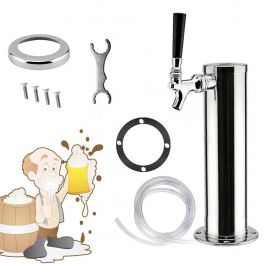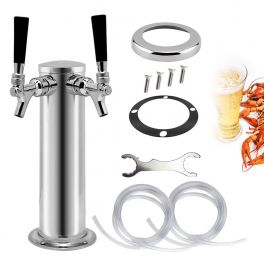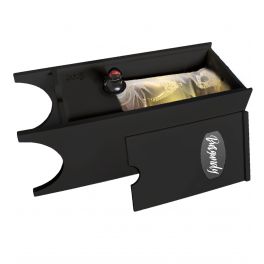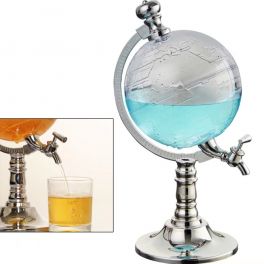Learning how to remove rust isn’t the first thing most of us want to do in our free time. But when age and the elements start to oxidize your metal fixtures — the architectural chrome track lighting that completed the living room, the mod exterior sconces lighting the entryway, the metal vases decorating the hall, or in my case, the five nickel light/fan combinations units I bought last year and installed in almost every room in the house — learning how to erase rust stains gains appeal. Because who wants to replace something perfectly functional and already paid for just because of some blemishes and age spots?
Here are some homemade rust cleaners that can prevent an unexpected, complete aesthetic update. In other words, let’s work with what we have to remove tarnish naturally before opting for a full facelift. In most cases, what we will need is just a room away.
Think Basic
Even though we would like to banish tarnish pronto, let’s gather our senses before the materials. First, if working on a light fixture, turn off the light. If you need to remove the entire fixture to clean it, turn off the electrical supply at the circuit breaker. Second, get a clean rag and a scouring pad. Not only will you need one, the other, or both for each option, every item to be de-rusted should first be cleaned of excess dust or dirt to prevent extra scratching. If the rust has accumulated layers, use a scouring pad to remove the bigger pieces.
Before trying any of the methods below, remember to do a test spot. It’s no different from trying to get a stain out of your clothes. Don’t risk ruining the whole thing. Try a spot, observe, and proceed.
Now, onto the pantry and medicine cabinet…
Think Bitter
Before any aggressive scrapping and scrubbing on the actual stain comes into play, let’s look at natural solvents. Start in the kitchen. Using white vinegar for rust removal is one more way this product wins most versatile pantry items ever discovered.
Apply a generous amount of vinegar to a rag and, depending on the severity of the rust, to the stain itself. Let soak for 10 minutes. Rub the vinegar in with some pressure to buff away the rust. If a small part of the item, such as a bolt or screw is particularly rusty, try soaking it for an extended period of time in the vinegar. (Extremely rusty items can soak for 24 hours.).
If the vinegar’s acidity isn’t enough, grab those multipurpose kitchen staples: lemon juice and baking soda. Mix both together (and enjoy the small volcanic fizz) to make enough paste to cover the stains. Let the paste sit for 20 minutes. With either the towel or scour pad, rub the paste into the stain until the stain decreases or disappears. Then wash it off and let the fixture dry.
Removing rust with baking soda alone is another option. Mix it with water to form a paste, apply to tarnish and use either a rag or soft scrub sponge to remove the stain.
I found that soaking the fixture prior to all of the above produced the best results. My fixture’s oxidation level was high. A sink full of water and one small bottle of white vinegar, with a soak time of one hour, was effective.
But if the rust still remains…
Think Minty
Onto the medicine cabinet because we're going to use toothpaste like a superfine polish. The more traditional the product is, the better. Depending on the severity of the corrosion and consistency of the toothpaste, you may or may not it dilute with water, depending on the level of rust on the item and the consistency of the toothpaste. Buff on with a rag or scrub sponge, use the toothbrush where needed, and then buff off. In my experiment, this worked best for any light residual tarnish remaining after heavy cleaning, but results can differ with different metals.
Is that rust still resisting your removal efforts?
Think Gritty
Now we are serious and off to the hardware store. The next item up is fine sandpaper. (150-grit should work.) Because if we can’t dissolve it, we are going to scratch it away (gradually, that is). Also, grab some metal polish while you’re there. And in the interest of economy of thought and time, perhaps choose a paint color you could, say, imagine on your fixtures.
Back at the fixtures cut an appropriately-sized piece of sandpaper and sand over — or just exfoliate — more than sand it to start. You can increase the pressure as needed, while being careful not to over-sand and scratch the surface we are trying to bring back to life. As you get close to the metal, try switching to the metal polish or back to one of the above options to remove any remaining stains.
(Presoaking also made this step much easier and more effective.)
Having run the gamut of natural rust removal, with soaks, scrubs, masks, and some form of microdermabrasion, it’s time to assess: Are we rust-free?
In my fixtures’ case, it took an as-needed combination of all the above steps to bring them back to their youth. Given the initial expense and my preference for the style, it was worth the investment of time and small groceries. It’s also worth polishing each piece making sure they never get more than slightly stained again.
If your results are not as clean as you had hoped, back to the hardware store you go. Remember that paint you chose?


























